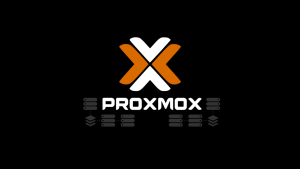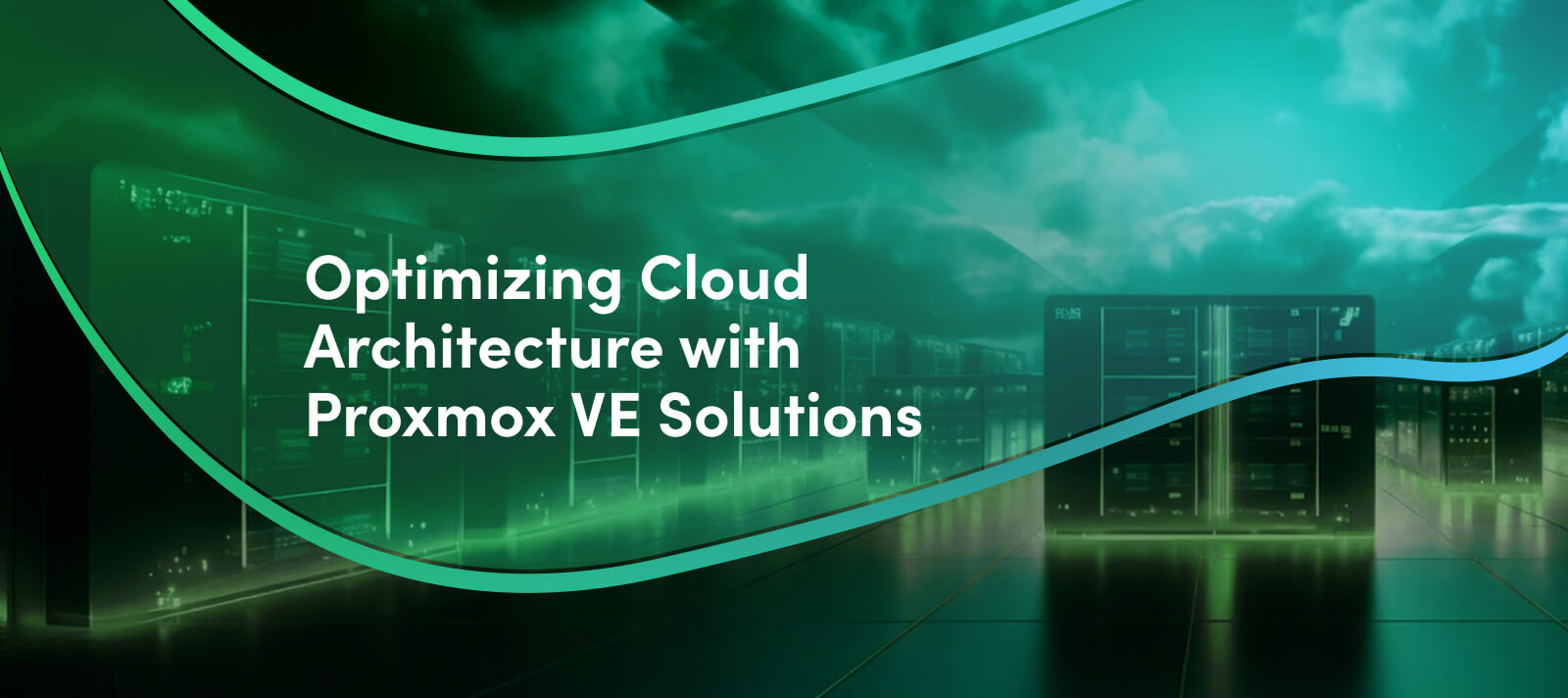In the dynamic world of cloud technology, Proxmox VE stands out as a crucial solution for businesses aiming for robust, scalable, and efficient cloud infrastructures. This opening installment of our series, ‘Optimizing Cloud with Proxmox VE: Guide for VMware Users,’ examines how Proxmox VE’s extensive support for virtualization and containerization establishes a foundation for transformative cloud architectures. We will explore Proxmox’s advanced networking capabilities and its seamless integration with storage solutions like Ceph and ZFS, highlighting its role not only as a cost-effective alternative to VMware but also as a powerful tool in its own right. Join us as we dissect the technical enhancements, migration strategies, and real-world applications that position Proxmox VE as a premier choice for optimizing your cloud setup.
Building a Cloud Architecture with Proxmox VE
Proxmox VE is highly effective in creating robust cloud infrastructures, leveraging its excellent support for virtualization and containerization along with advanced networking capabilities.

Cloud Architectural Setup:
Network Configuration: We employ detailed VLAN and VXLAN setups to create secure network segments, essential for operations that handle sensitive data. These configurations are critical for ensuring data security and seamless connectivity between on-premises environments and public cloud services.
Storage Solutions:
Utilizing Ceph or ZFS not only provides scalable and redundant storage but also enables crucial features such as snapshotting and rollbacks, which are indispensable for maintaining data integrity. These storage options support high availability and disaster recovery scenarios, ensuring data is safe and recoverable in any event.
Proxmox VE not only enhances virtual infrastructure management but also facilitates seamless integration with public cloud services, ensuring a unified management experience across both on-premises and cloud resources. This capability is crucial for organizations that need the scalability of the cloud while keeping certain resources on-premises for compliance or performance reasons.
At Netrouting, we leverage Proxmox VE and Proxmox PBS extensively across all our locations to support our innovative public and private cloud solutions, as well as virtual service routers and firewalls. By integrating Proxmox with Ceph, we build a fault-tolerant infrastructure that is not only scalable but also driven by high performance. Our nodes are equipped with up to 1 terabyte of RAM, and our storage solutions are powered by enterprise-grade SSD NVMe drives. This setup exemplifies how our Optimized Cloud Compute services can enhance your cloud architecture, offering real-world applications that demonstrate the power of Proxmox in a professional environment. Discover more about how this integration can transform your IT landscape here.
Technical Enhancements:
- Storage Solutions: The chain utilizes a combination of Ceph for distributed storage and ZFS for high-performance local storage, ensuring robust data management across different locations.
- Load Balancing: Advanced load balancing techniques are employed to manage traffic flows efficiently, which is critical during high traffic volumes, ensuring consistent application performance and availability.
- Disaster Recovery: Strategically positioned backup systems and failover mechanisms ensure continuous operation, even during unexpected disruptions.
This real-world example not only demonstrates the scalability and flexibility of Proxmox VE in a cloud setting but also highlights its capability to significantly enhance operational efficiency and resilience in complex, high-demand environments.
Detailed Migration Strategies and Data Security Integration
Integrating Veeam for Enhanced Data Protection
Integrating Veeam into the Proxmox VE environment is a strategic move to ensure compliance with existing data processing, storage, and retention policies, particularly valuable for customers transitioning from VMware. By utilizing Veeam within Proxmox, organizations can leverage advanced backup and replication features without the need to overhaul their current disaster recovery (DR) setups. This integration allows businesses to maintain uninterrupted data protection workflows, which is crucial for operations that cannot afford downtime or data loss.
Furthermore, Veeam’s capabilities, such as instant VM recovery and scalable backup repositories, enhance the overall efficiency of the Proxmox environment. The flexibility and cost-effectiveness of Proxmox, combined with Veeam’s robust data protection, offer a compelling solution for organizations looking to optimize their virtual infrastructure. For many businesses, this continuity not only provides peace of mind during the migration process but also supports ongoing operational efficiency and regulatory compliance. Testimonials from clients who have successfully made the transition highlight the ease of integration and the seamless continuity of their data protection protocols, reinforcing the strategic advantage of this setup.
Implementing Proxmox Backup Server (PBS) for Cost-effective Data Security
Proxmox Backup Server (PBS) is tailored to provide a streamlined, cost-effective backup solution for Proxmox environments. It offers incremental backups, data deduplication, encryption, backup integrity checks, encrypted backup transfer, and robust scheduling features – key elements for managing backups efficiently and securely. Implementing PBS involves setting it up on a dedicated server or as a virtual machine within Proxmox, configuring storage targets, and scheduling regular backup jobs. This setup enables businesses to achieve robust data safety without incurring extra costs.
While Veeam is a proven solution with extensive features suitable for a wide range of environments, PBS offers significant advantages for Proxmox users. Its seamless integration and free-of-charge deployment make it a particularly attractive, budget-friendly option, providing extensive functionality tailored to enhance Proxmox environments without compromising on features or security.
Migration Tools and Techniques
For the migration process, leveraging dedicated high-speed internet connections, such as Ethernet services, is crucial. These point-to-point connections between the client’s premises or data center and the new Proxmox setup facilitate the rapid transfer of significant data volumes, minimizing the migration window and reducing downtime. Partnering with services like Netrouting ensures not only the necessary bandwidth but also secure and efficient data transfer. They can provide Ethernet services for direct connectivity, or utilize cloud on-ramp solutions like AWS Direct Connect or Azure ExpressRoute to enhance the migration. Additionally, implementing VPNs with encrypted connections, potentially supported by (temporary) firewalls offered by Netrouting, secures the data paths between old and new environments, adding a layer of protection against unauthorized access and data breaches during this vulnerable transition period.
VMware to Proxmox Conversion Process
The conversion from VMware to Proxmox VE centers on transforming VMware VMDK files into Proxmox’s QCOW2 format. This step is crucial as it ensures that the integrity of the data is maintained during the conversion process. Proxmox offers built-in tools that facilitate this conversion, but third-party tools can also be used to handle specific scenarios that the native tools may not cover.
Practical Insight:
Sharing user experiences and practical tips from those who have undergone similar migrations can provide valuable insights into the challenges faced and the solutions that worked. For instance, understanding common pitfalls and effective troubleshooting strategies can significantly smooth the transition process. After the conversion, thorough testing is essential to confirm that all systems and applications function correctly in the new Proxmox environment. This stage should include detailed performance evaluations and, if necessary, adjustments to resource allocations based on the insights gained. This careful testing and validation process ensures that the new system is not only stable but also optimized for the best performance, thus maintaining operational integrity and service continuity.
Conclusion
Transitioning to a cloud with Proxmox VE empowers businesses to harness the full potential of virtualization and containerization, seamlessly integrating on-premises and cloud resources. Through strategic use of advanced networking and storage solutions like Ceph and ZFS, organizations can ensure data integrity and scalability. Real-world implementations, such as those by global retailers, underscore the platform’s capacity to enhance service delivery and operational resilience.
By integrating tools like Veeam and Proxmox Backup Server, businesses not only achieve robust data protection but also maintain seamless continuity and compliance. Partnering with high-speed and secure connectivity services, such as Netrouting’s Cloud Compute and Optimized Cloud Compute, further optimizes migration processes and safeguards data integrity.
As businesses adopt Proxmox VE, they gain increased control and agility, positioning themselves to thrive in a dynamic, competitive landscape. Proxmox VE’s ability to deliver scalable, efficient, and resilient cloud architectures, complemented by Netrouting’s innovative solutions, makes it an indispensable asset for any forward-thinking organization.






